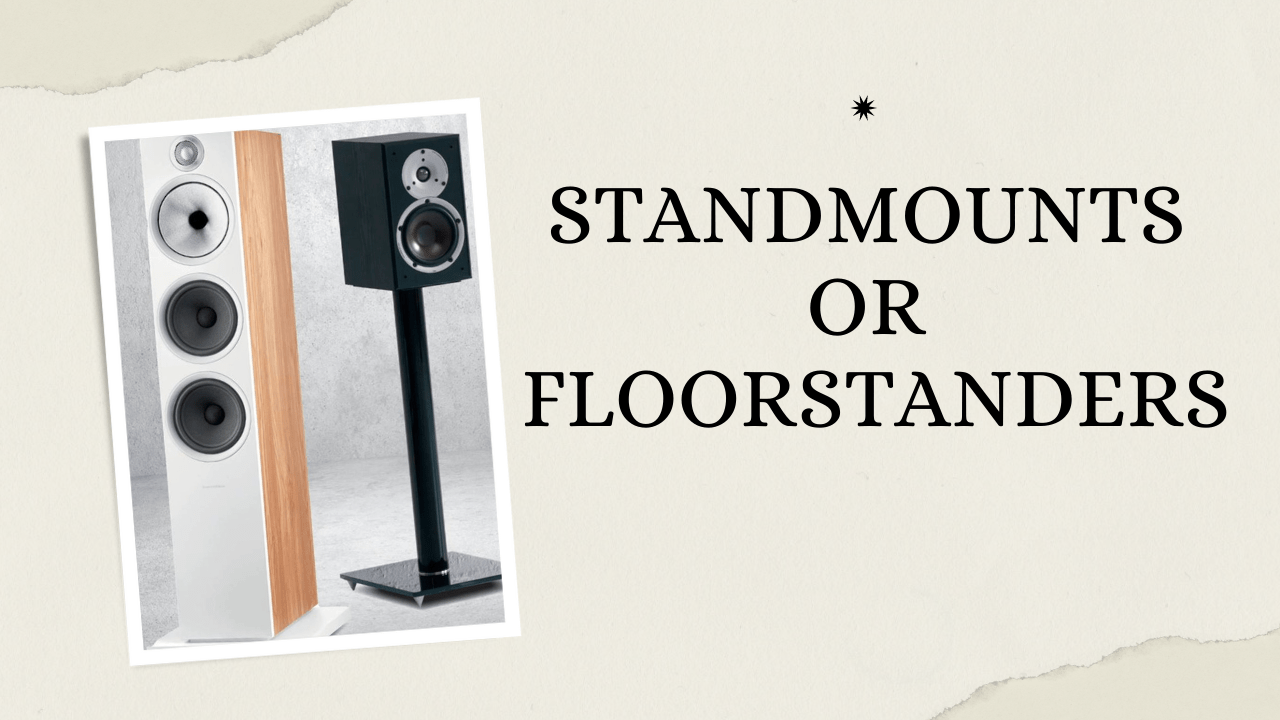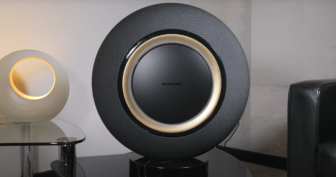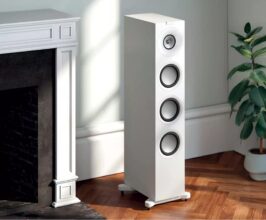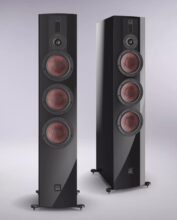Loudspeakers
STANDMOUNTS OR FLOORSTANDERS
01 Jan 2022
It’s the first thing you need to consider when buying speakers. Here are the eight questions that will help you choose wisely…
Why do some people buy standmount speakers and others buy floorstanders? Why do manufacturers make both? If the floorstanding versions are bigger and more expensive, is it just a question of having the budget?

So many questions. But you’re right to ask. The question of whether to buy standmount or floorstanding speakers is one of the earliest and most fundamental considerations you will have to make when deciding to purchase speakers. It will direct the rest of your research, and so the subject is deserving of your in-depth consideration.
We’ve put together eight questions here, the answers to which may hold the key to the dilemma, depending on your specific circumstances. More importantly, ignoring any of these may leave you wasting money on something that’s not right for you.
What’s your budget?
Let’s start with the most obvious question. If you’re seeking a bargain that sounds great, you’re more likely to be looking at standmount speakers. This isn’t just because you’re paying for more wood or extra drivers with floorstanders, rather that it’s more difficult to engineer topperforming floorstanders for the same price you can with a smaller speaker.
A larger cabinet can equal more unwanted resonance — leading to greater distortion, difficulty with controlling dynamics and the like — so more care and cash needs to be spent in cabinet design.
On the flipside, standmount speakers should ideally be paired with suitable stands, so take that into consideration. Given that stands can be not inexpensive, the few genuinely brilliant budget floorstanders may even end up saving you money on a price-equivalent pair of standmounters.
How much space do you have?
This could be the make-or-break question. It isn’t so much about the speakers’ footprint — it’s fairly obvious that once on stands even the most slender standmount speakers take up around the same amount of floor space as a pair of towers, even if you might be able to lean a few trendy music books up against the column of the speaker stand.
No, it’s more about how much room the speakers have to breathe. There are plenty of generally unfussy speakers that don’t mind having their backs close up against a wall, but most of the time you’ll get the best performance by placing them some way out into the room. There are no hard and fast rules — well, there are if you’re a professional installer calculating nodes and wavelengths, but for most of us it’s easier to suck it and see. In general the bigger the speaker, the more space it needs in which to work. Smaller standmounters can usually tuck in tighter, and designers aiming for bookshelf positioning often port them to the front, so you have even more freedom to get them back against the wall, cables and nodes permitting.
But there’s no point in buying a huge pair of floorstanders if their presentation is going to be hamstrung by the size of your bedsit.
How loud can you go?
Contrary to the belief of pub bands the world over, increased volume does not make everything sound better. But if your living room is the size of a football pitch, are those entry-level bookshelf speakers really going to be able to fill it with sound? Every speaker has its sweet spot for volume, where — coupled with the amplification — going any louder brings distortion that disturbs the ears. If you’re overworking a pair of standmounters in a large room, or starving floorstanders in a small one, you’re simply not getting the best return on your money in terms of sonic performance.
What are you using them for?
Even when spending money on what we enjoy, few people won’t want to make every penny count, and that means having a purpose in mind. If your new speakers are for more than listening to music, in particular home cinema, that might tip the balance toward a larger cabinet. Standmounters might be suitable for your hi-fi needs, but will getting a pair of speakers capable of a more powerful performance save you buying a second audio set-up for your action movie marathons?
How low do you need to go?
We’ve tested plenty of smaller speakers where the low-end response has been extremely impressive, so if you want to feel your insides rumbled, you might not need to go as large as you’d think. That said, the larger cabinets and additional/ larger drivers in floorstanders should deliver more powerful (if not necessarily more precise) bass, so that may be the way if the low stuff is a key priority.
But there is the subwoofer path. Subwoofers are for music as well as movies, and you can get the best of both worlds — the precision of a standmount with the depth of the subwoofer. However, a good subwoofer can be a pricey addition to a system, while a cheap subwoofer will be no help at all.
What’s your partnering kit?
Partnering kit is going to make a difference. That may have something to do with budget — there’s no point in partnering huge towers with a cut-price micro-system — but it’s mainly the amount of power your amp can feed into them.
Another way to look at this is whether the speakers you’re looking to buy will give you wiggle room for future upgrades in the rest of your system. Never underestimate the difference a good amp can make. If you’re already thinking about a more powerful amplifier as your next purchase, you might consider a more capable pair of speakers that will show off its muscle in the long term.
How will they look?
While our reviews are mostly concerned with audio performance, we will often pass comment on the aesthetic design of a product. Facets such as poor build or a lack of features matter, because a product has to be useful as well as sounding good.
We love speakers as furniture; we don’t get the people who think all speakers are ugly and shouldn’t have a place in the modern living room. ‘Is a piano ugly?’ we ask. ‘Is your face ugly?’ they retort, and it all goes downhill. But there are plenty of undeniably eye-catching standmounts and floorstanders — for both the right and wrong reasons — and the main point is that you don’t want your speakers to look silly in the room. If you don’t like looking at your speakers, you’re unlikely to spend much time enjoying listening to them.
What about set-up?
Don’t just plonk them down and leave them. Don’t have one ‘bookshelf’ speaker on a shelf and one on a table. Tweeters should be at ear height when you’re listening. In spatial terms, make a triangle with the speakers. The product manual is always a great place to start; positioning is all about experimentation and fine-tuning. Use the supplied feet, or spikes to ground them through carpet. Try toeing them in, listening for when you get a solid centre and an expansive and clear soundstage between and hopefully beyond the speakers. Listen for depth of image also.
And if you do go standmount, factor in those dedicated speaker stands, or plan to get them soon as an upgrade. When you have a lovely new pair of speakers, it doesn’t make sense to save a little at the end — you should make sure your speakers are able to sound their best.






